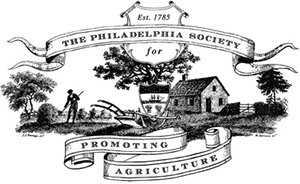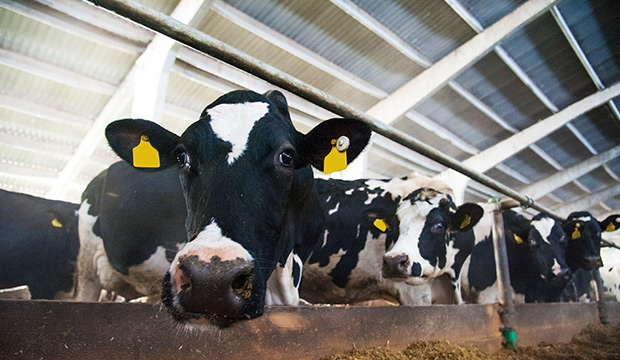The Society thanks member Duncan Allison for preparing these wonderful updates.
The prospect of spring seems to have brought more optimism about markets and there is certainly no shortage of exciting news in agriculture. Market prices at least for corn and soybeans appear to be more encouraging and the USDA has introduced a program for milk producers. $34 million is available to help all producers recover from natural disasters.
Milk and Dairy – Production per cow has increased to 23,000 lbs/cow from only 8,821 lbs/cow in 1967. Nationally this meant 70% more milk from 30% fewer cows. The record production in a 365 day lactation was 78,170 lbs. milk from a Holstein. It is estimated that there is potential for annual milk and milk solids production to double by 2067 in countries such as the US and New Zealand where the geography is ideal.
“The next 50 years comprise about two generations so it seems unlikely that new technologies coupled with improved sustainability of farming practices will strengthen dairying and keep it positioned to provide dairy foods efficiently and sustainably.” Scientist in April issue of the Journal of Dairy Science.
Milk or “milk” – Concern continues about beverage producers naming their products …milk with absolutely no connection to a dairy animal. However there are too many existing non-dairy milk products to change the situation. They are based on oat, hemp, almond, rice, soy, hazelnut, coconut, cashew, flax seed and grains and are often complemented with a variety of vitamin and mineral supplements to provide full nutritional value. The dairy industry will have to continue its battle to promote the health value of dairy products.
“Milk and dairy foods are healthy foods and considered nutrient-rich because they serve as good sources of calcium and vitamin D as well as protein and other essential nutrients. They provide phosphorus, potassium, magnesium, and vitamins A, B12, and riboflavin1.” Dairy Alliance Exports are restricted because of lactose intolerance which affects about 75% of the world’s population so limiting the market but interestingly India is now the largest dairy producer – from cows and buffalos. 14.2% of our U.S. milk production is exported, valued at $4.8 billion of which $3.8 billion is milk solids. The U.S. Dairy Export Council forecasts that even with increased international competition, “U.S. dairy exporters are positioned to compete for increased export volumes and global market share in key product sectors, particularly cheese.”
Scientists wrote in the April issue of the Journal of Dairy Science “The next 50 years comprise about two generations, so it seems unlikely that dairying as we know it will be displaced by 2067. It is more likely that new technologies coupled with improved sustainability of farming practices will strengthen dairying and keep it positioned to provide dairy foods efficiently and sustainably.”
Challenge of perception? The Center for Food Integrity has concluded from a recent survey that America’s livestock and poultry farmers have some work to do. 55% of the people responding in their recent survey agreed “If farm animals are treated decently and humanely, I have no problem consuming meat, milk and eggs.” However only one in four people strongly agree with “U.S. meat is derived from humanely treated animals.” Disconnect? Trust deficit? “Consumers have traditionally trusted farmers because they believe farmers share their values. But consumers aren’t sure today’s agriculture still qualifies as farming.”
Lots of effort is being devoted to animal welfare, worker safety, environmental impact and food safety. “The key to overcoming the trust gap is proactive and long-term engagement with consumers to tell the story.” CFI research proves that increased transparency and communicating that you value the same things consumers do …is critical to the process. Healthy strides in demonstrating transparency are as important as technology and innovation advancements in building consumer trust.” Charlie Arnot, CEO of CFI.
The latest Lely Robotic milker – Lely’s new Astronaut A5 automatic milker has been tested on 30 farms and involved more than 2 million milkings. It reduces stress for cows by optimizing cow comfort and free flow. There are estimated to be around 2,000 automatic milkers in use in the US – 60% from Dutch-based Lely and most of the remainder from Sweden based DeLaval. 10-12% growth reported over the last three years. Why? Availability of labor, reduced labor, higher milk production, and quality of life for the dairy owner who can focus on all the other aspects of the business.

